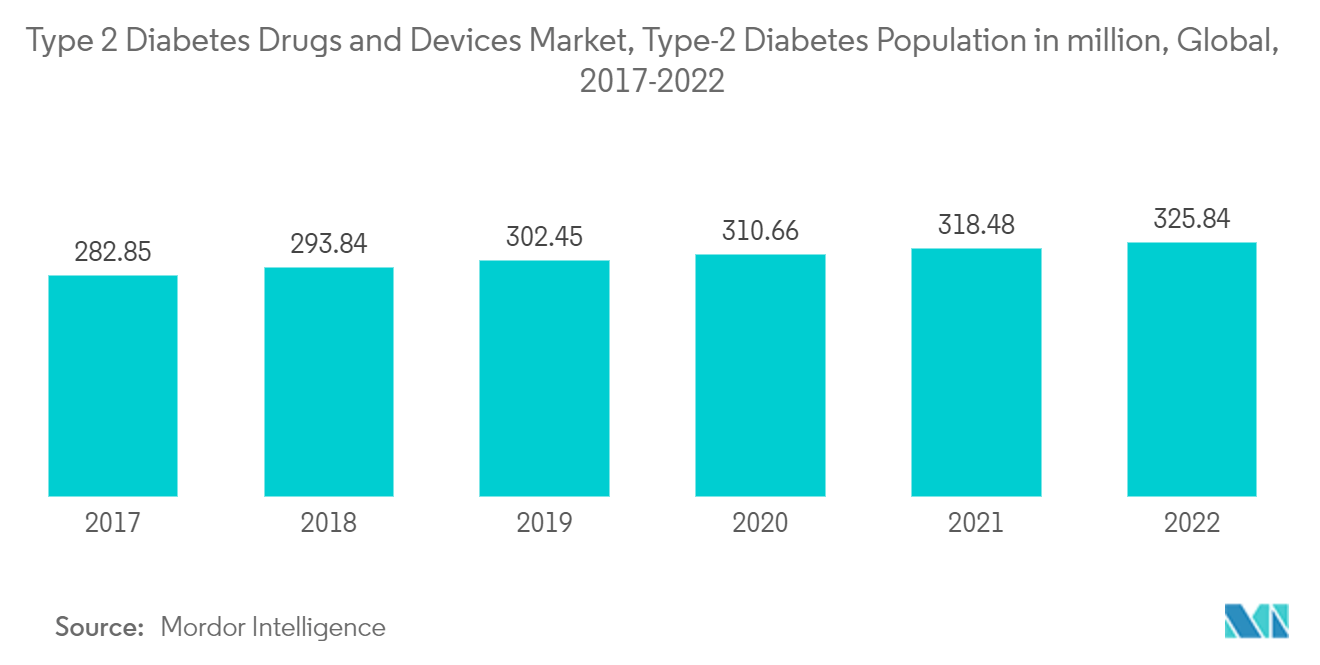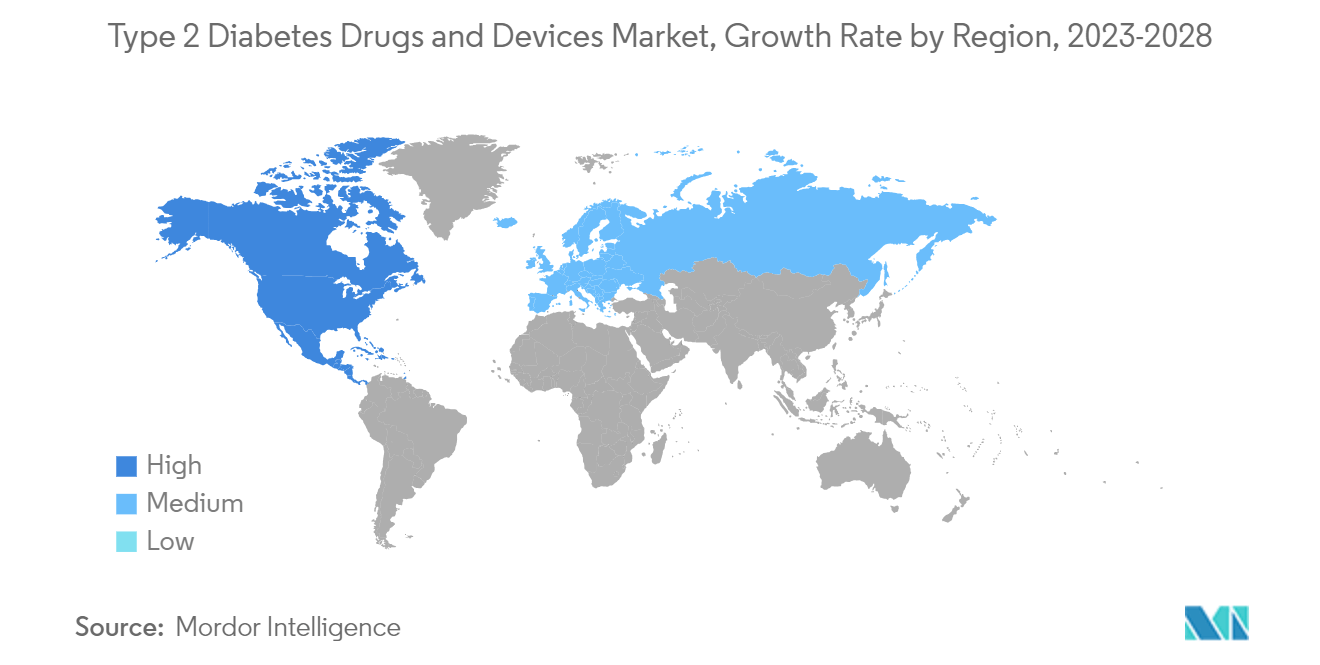Market Trends of Type 2 Diabetes Drugs And Devices Industry
Rising obesity and diabetes prevalence over the forecast period is likely to boost the market growth
As per the International Diabetes Federation's latest estimates, about 10% of all diabetes cases are type 1, and the remaining is Type 2. The adult diabetes population is approximately 537 million, and this number is going to increase by 643 million in 2030. The rate of newly diagnosed cases of diabetes is seen to increase, mainly due to obesity, unhealthy diet, and sedentary lifestyle. Diabetes can be detected using HbA1c tests, and an appropriate treatment regimen can be implemented. In 2022, the WHO Global Diabetes Compact outlined five diabetes targets to reach by 2030, focused on addressing metabolic risks, access to medication, and diagnosis. The outlook for a healthy future is further marked by sustained progress in strategies designed to remediate diabetes through control of calorie intake, physical activity, and medication.
Oral Anti-Diabetic Drugs have been available internationally and are recommended for use when escalation of treatment for type 2 diabetes is required along with lifestyle management. Oral agents are typically the first medications used in the treatment of type 2 diabetes due to their wide range of efficacy, safety, and mechanisms of action. Antidiabetic drugs help diabetes patients to keep their condition under control and lower the risk of diabetes complications. Oral anti-diabetic agents present the advantages of easier management and lower cost, so they became an attractive alternative to insulin with better acceptance, which enhances adherence to the treatment.
Self-monitoring blood glucose devices are the most preferred device by patients due to their economic affordability and less sophisticated usage compared to CGM. The average efficiency of the glucose meter ranges between six months to three years, whereas test strips are for one-time use. The introduction of new kinds of lancet devices that induce lesser pain to the users is expected to help the market’s growth, as the acceptance rate is expected to rise during the forecast period.
Stringent government policies and favorable regulations by the WHO regarding the usage of diabetes drugs and devices are encouraging companies to develop innovative products to improve patient compliance and prevent diabetic complications.
Owing to the rising prevalence of type 2 diabetes and the factors above, it is likely that the market will continue to grow.

The Asia-Pacific region is Expected to Witness Highest Growth Rate Over the Forecast Period
In Asia-Pacific, deaths attributable to high blood glucose due to type 2 diabetes increased among lower-middle and low-income Asia-Pacific countries and territories, and about half of them are undiagnosed and unaware of developing long-term complications. According to the International Diabetes Federation's latest estimates, 90 million adults in the age group of 20-79 are living with diabetes in the Southeast Asia (SEA) Region, which is projected to increase to 113 million by 2030 and 152 million by 2045.
Countries like India and China have been recognized as potential developing markets due to the growing diabetic population in this region. These markets are associated with some challenges, like slow economic growth and increased competition. As per the National Health Commission, China has made steps to reduce diabetic patients' medical expenses by reimbursing outpatients for more than half of their medication costs. Effective strategies are needed to manage patients with diabetic complications to reduce the use of healthcare resources and economic burden. According to the National Metabolic Disease Clinical Research Center, more hospitals in China will establish National Metabolic Management Centers (MMC) as part of their exploration of a new model of diabetes treatment.
Diabetes has been identified as a healthcare priority by the Ministry of Health, Labour, and Welfare in Japan. The high prevalence of type 2 diabetes is associated with a significant economic burden. Costs increase with an increasing number of complications. Well-organized medical insurance systems cover all medical fees for diabetes mellitus, and diabetics can visit doctors freely in Japan.
The region is witnessing a significant increase in the number of generic manufacturers, and there is a growing preference for cost-effective treatment among type 2 diabetic patients, thereby giving a boost to the growth of the market studied.


